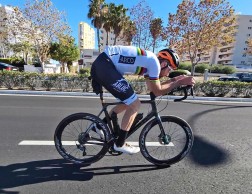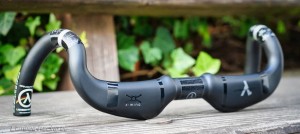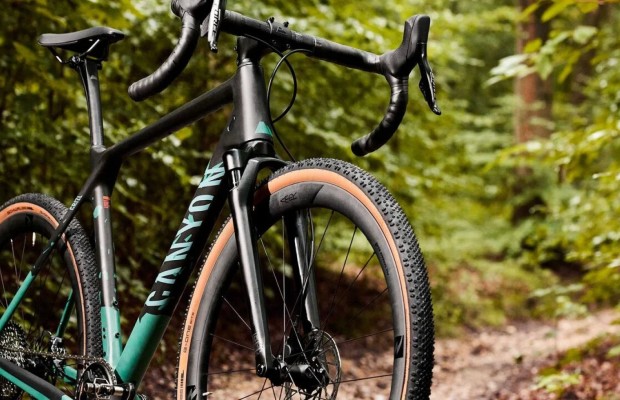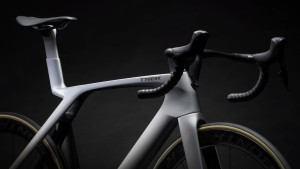New narrow handlebars with flare to evade UCI regulations on brake levers
He who made the law made the loophole. Faced with the limitations introduced by the UCI regarding the width of the handlebars and the placement of the levers, there are already brands that have models capable of offering a very aerodynamic position but adhering to the rules set by the highest body of cycling.

Ingenuity against the UCI limitations on handlebars and lever placement
The tug of war between cyclists to achieve the most aerodynamic position on their road bike and the UCI to avoid what they consider dangerous seems to have no end. It all started when, in 2021, the international federation banned dangerous positions on the bike, a rule specifically aimed at the "bug ball" position that almost all cyclists used to descend at maximum speed and, on the other hand, the placement with the forearms on the handlebar, emulating a hypothetical time trial handlebar that many adopted on flat terrain when they were on the run or pulling the peloton.

RECOMENDADO

When do helmets have to be changed? Do they have an expiration date?

Some reasons to stay away from the road in winter

The best apps for cycling and mountain biking

Black Friday 2025 cycling bargains: save on Garmin, POC, Maxxis and more

Black Friday Garmin 2025: the ultimate guide to choosing your GPS at the best price

Do you need suspension on your gravel bike?
Obviously, cyclists were not willing to give up so many free watts and soon it became popular to place the levers turned inward in order to maintain grip and thus comply with the rule while narrowing their position and still maintaining forearm support on the handlebar. In turn, the handlebars used by professionals have been narrowing for this same reason, even with radical models like those we usually saw on bikes of cyclists like Victor Campenaerts, with the detriment to bike control that this implies by reducing the steering capacity by having less lever arm.
An aspect that has been largely solved with the popularization of handlebars with flare, derived from those commonly used in gravel in which the lower part of their curve has a greater width than the upper part of it where the levers are placed.
The radicalization of some lever configurations has made the UCI take action again. On the one hand, limiting the minimum width of the handlebars which cannot be less than 350 mm and, on the other hand, based on diagrams to which their dimensions must adhere and which, for practical purposes, limit the flare of the same. The other rule recently imposed by the UCI is the one that puts a stop to the turning of the levers inward, which cannot be greater than 10 degrees.

With this it seems that the UCI has all the loose ends tied up in order to ensure that cyclists do not adopt too radical measures but, however, there are models on the market capable of offering a tremendously aggressive placement and, in turn, are specifically designed to adhere to the parameters set by the UCI.
Clear examples are the Cross Wing models from the German artisan brand Lambda Racing which, at the top, offer a width of only 33 cm, while the bottom remains at a minimum 40 cm and which, as specifically mentioned in their features, are within the legal margins set by the UCI. The intrinsic inclination of the levers caused by its flare makes the effective width of them at the top part be 24 cm.
Much more exotic is the Ashaa RR model created by the TooT Enginering firm. An atypical handlebar made of steel by 3D printing. This has a version with a width of 35 cm at the bottom, which translates into an effective width at the tip of the levers of only 21 cm.

Now we just have to see how long it takes for bike brands and team suppliers to create designs of their own products that are capable of circumventing the limitations as these examples do. For now, the only firm that has a standard handlebar with generous flare is Trek with the one they mount on their aerodynamic Madones, although its flare between the bottom and the lever attachment area is only 3 cm.